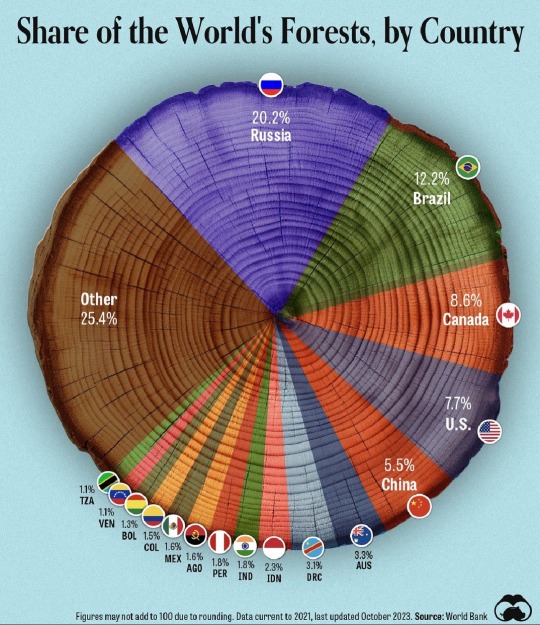#natural resources
Text


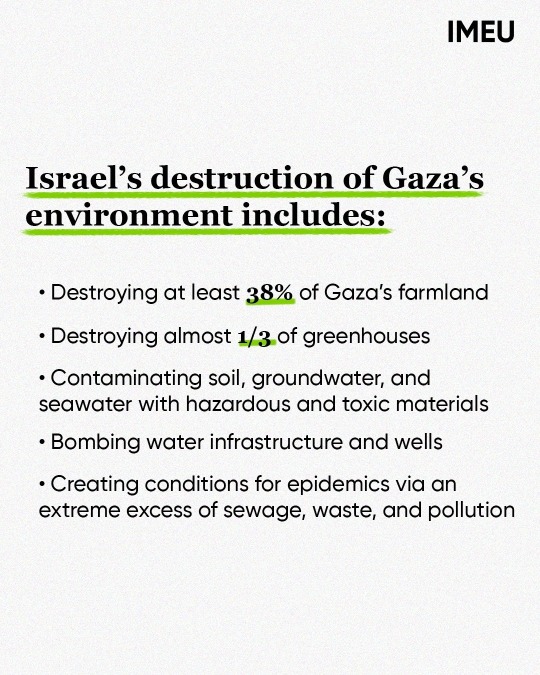



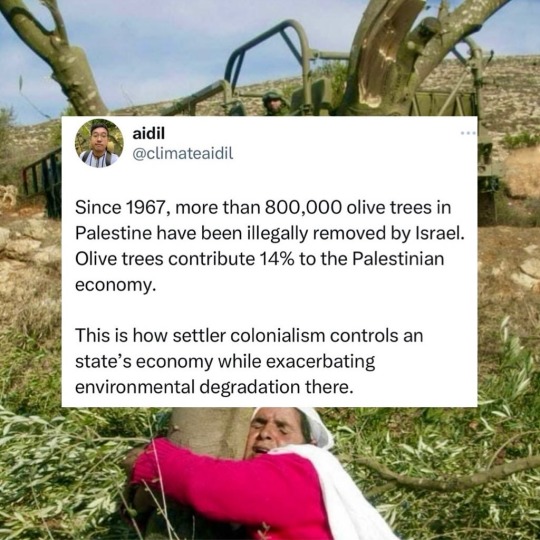

🌿An Earth Day fusion repost from @theimeu and @muchachafanzine.
🌿In honor of Earth Day, please visit @zaytoun_cic, @handmadepalestine, or @plant.eenolijfboom to plant an olive tree in Palestine. 🕊
🌿From @theimeu:
This Earth Day, we mourn the 34,000+ Palestinians killed by Israel in Gaza and Israel’s continued degradation of Gaza’s land, water, and other natural resources that make life possible for Palestinians.
In the past 6 months alone, Israel has destroyed farmland and greenhouses, contaminated natural resources with hazardous materials, bombed key water purifying infrastructure and wells, and created conditions for epidemics caused by an extreme excess of sewage, waste, and pollution.
Israel’s systematic destruction of Gaza’s environment is part of its goal of making life for Palestinians in Gaza unlivable.
Link in bio to contact your reps and urge an immediate, permanent ceasefire and the immediate suspension of all arms and funds to Israel.
Sources: The Guardian, Scientific American
🌿From @muchachafanzine:
Reminder this #EarthDay that from Turtle Island to Pa1estine, your environmentalism doesn’t mean sh!t if you don’t support giving the #LandBack to Indigenous people. 🤷🏽♀️
#land back#indigenous rights#indigenous resistance#indigenous peoples#human rights#palestine#free palestine#gaza#ecocide#ecology#environmental activism#environment#olive trees#free gaza#stop the genocide#earth day#natural resources#farming#land stewardship#israel#israel is committing genocide#israel is a terrorist state#israeli apartheid#israeli occupation#end the occupation#ceasefire now
55 notes
·
View notes
Text
🦉 🌎 🌍 Happy Earth Day 2024! 🌏 🌻 🐝
Earth Day originated in 1970 when pollution was the biggest environmental concern. Air and waterways are undoubtedly cleaner 50+ years later. It demonstrates that progress can be made when there's a concerted effort.
A current problem which gets overlooked is the amount of environmental damage which the Russian invasion has caused in Ukraine. Environmental activist Greta Thunberg has called Putin's environmental destruction "ecocide".
Greta Thunberg denounces 'ecocide' in Ukraine
Just about every aspect of the environment has been worsened by Putin's illegal military action.
After Two Years of War, Ukraine Sees Deepening Environmental Wound
A consortium of agencies called EcoDozor has put together a map graphic showing the environmental consequences of the invasion.
Ecodozor
I feel strongly that Russian state assets should be impounded to pay for the damage. Contact your representative at your national parliament and insist that Russian assets be seized to be used to repair environmental damage done in Ukraine by Putin's Russia.
On a historical note, here's a cartoon done by American-Australian underground artist Ron Cobb. It gave rise to the use of the Greek letter Theta 𝚹 to symbolize environmental protection.

In turn, high school students in Springfield, Illinois were inspired to turn that into into a flag for the first Earth Day.
This Homemade Flag From the ‘70s Signals the Beginning of the Environmental Movement
Being mindful of the power of semiotics, it might be useful to revive Theta as a symbol of environmental action. It already exists as an emoji and most of us have devices which can access a Greek font. And at Tumblr we can make stuff green. 𝚹 Θ
#earth day#ukraine#invasion of ukraine#environmental damage caused by russia#ecocide#greta thunberg#ecodozor#vladimir putin#putin is a war criminal#seizing russian assets#ron cobb#theta#semiotics#earth day flag#lanphier high school#springfield illinois#raymond bruzan#pollution#climate change#natural resources#sustainability#the environment#україна#екоцид#екологічна шкода#россия#владимир путин#путин - военный преступник#путина в гаагу!#слава україні!
31 notes
·
View notes
Text

LETTERS FROM AN AMERICAN
April 21, 2024
HEATHER COX RICHARDSON
APR 22, 2024
During her confirmation hearings in 2021, Interior Department secretary Deb Haaland promised “to responsibly manage our natural resources to protect them for future generations—so that we can continue to work, live, hunt, fish, and pray among them.” Noting her Indigenous heritage, Haaland tweeted, “A voice like mine has never been a Cabinet secretary or at the head of the Department of Interior…. I’ll be fierce for all of us, our planet, and all of our protected land.”
Her approach was a shift from the practice the Interior Department had established at the beginning of the twentieth century when it began to prioritize mineral, oil, and gas development, as well as livestock grazing, on U.S. public lands. But the devastating effects of climate change have brought those old priorities into question.
Republicans, especially those from states like Wyoming, which collects more than a billion dollars a year in royalties and taxes from the oil, gas, and coal produced on federal lands in the state, opposed Haaland’s focus on responsible management of natural resources for the future and warned that the Biden administration is “taking a sledgehammer to Western states’ economies.”
On Thursday, April 18, the Interior Department finalized a new rule for a balanced management of America’s public lands. Put together after a public hearing period that saw more than 200,000 comments from states, individuals, Tribal and local governments, industry groups, and advocacy organizations, the new rule prioritizes the health of the lands and waters the Interior Department’s Bureau of Land Management oversees. Those consist of about 245 million acres, primarily in 12 western states.
The new rule calls for protection of the land, restoration of the places that have been harmed in the past, and a promise to make informed decisions about future use based on “science, data, and Indigenous knowledge.” It “recognizes conservation as an essential component of public lands management, on equal footing with other multiple uses of these lands.” The Bureau of Land Management will now auction off leases not only for drilling, but also for conservation and restoration.
Western state leaders oppose the Biden administration’s efforts to change the Interior Department’s past practices, calling them “colonial forces of national environmental groups who are pushing an agenda” onto states like Wyoming.
The timing of the Interior Department’s new rule can’t help but call attention to Earth Day, celebrated tomorrow, on April 22. Earth Day is no novel proposition. Americans celebrated it for the first time in 1970. Nor was it a partisan idea in that year: Republican president Richard M. Nixon established it as Americans recognized a crisis that transcended partisanship and came together to fix it.
The spark for the first Earth Day was the 1962 publication of marine biologist Rachel Carson’s Silent Spring, which showed the devastating effects of people on nature by documenting the effect of modern pesticides on the natural world. Her exposé of how the popular pesticide DDT was poisoning the food chain in American waters illuminated the dangerous overuse of chemicals and their effect on living organisms, and it caught readers’ attention. Carson’s book sold more than half a million copies in 24 countries.
Democratic president John F. Kennedy asked the President’s Science Advisory Committee to look into Carson’s argument, and the committee vindicated her. Before she died of breast cancer in 1964, Carson noted: "Man's attitude toward nature is today critically important simply because we have now acquired a fateful power to alter and destroy nature. But man is a part of nature, and his war against nature is inevitably a war against himself? [We are] challenged as mankind has never been challenged before to prove our maturity and our mastery, not of nature, but of ourselves."
As scientists organized the Environmental Defense Fund, Americans began to pay closer attention to human effects on the environment, especially after three crucial events. First, on December 24, 1968, astronaut William Anders took a color photograph of the Earth rising over the horizon of the moon from outer space during the Apollo 8 mission, powerfully illustrating the beauty and isolation of the globe on which we all live.
Then, over 10 days in January and February 1969, a massive oil spill off the coast of Santa Barbara, California, poured between 80,000 and 100,000 barrels of oil into the Pacific, fouling 35 miles of California beaches and killing seabirds, dolphins, sea lions, and elephant seals. Public outrage ran so high that President Nixon went to Santa Barbara in March to see the cleanup efforts, telling the American public that “the Santa Barbara incident has frankly touched the conscience of the American people.”
And then, in June 1969, the chemical contaminants that had been dumped into Cleveland’s Cuyahoga River caught fire. A dumping ground for local heavy industry, the river had actually burned more than ten times in the previous century, but with increased focus on environmental damage, this time the burning river garnered national attention.
In February 1970, President Nixon sent to Congress a special message “on environmental quality.” “[W]e…have too casually and too long abused our natural environment,” he wrote. “The time has come when we can wait no longer to repair the damage already done, and to establish new criteria to guide us in the future.”
“The tasks that need doing require money, resolve and ingenuity,” Nixon said, “and they are too big to be done by government alone. They call for fundamentally new philosophies of land, air and water use, for stricter regulation, for expanded government action, for greater citizen involvement, and for new programs to ensure that government, industry and individuals all are called on to do their share of the job and to pay their share of the cost.”
Meanwhile, Gaylord Nelson, a Democratic senator from Wisconsin, visited the Santa Barbara oil spill and hoped to turn the same sort of enthusiasm people were bringing to protests against the Vietnam War toward efforts to protect the environment. He announced a teach-in on college campuses, which soon grew into a wider movement across the country. Their “Earth Day,” held on April 22, 1970, brought more than 20 million Americans—10% of the total population of the country at the time—to call for the nation to address the damage caused by 150 years of unregulated industrial development. The movement included members of all political parties, rich Americans and their poorer neighbors, people who lived in the city and those in the country, labor leaders and their employers. It is still one of the largest protests in American history.
In July 1970, at the advice of a council convened to figure out how to consolidate government programs to combat pollution, Nixon proposed to Congress a new agency, the Environmental Protection Agency, which Congress created that December.
In honor of Earth Day 2024, Democratic president Joe Biden has called for carrying on the legacy of our predecessors “by building a greener, more sustainable planet and, with it, a healthier, more prosperous nation.”
In a statement, Biden noted that no one can any longer deny the impacts and staggering costs of climate change as the nation confronts historic floods, droughts, and hurricanes.
“Deforestation, nature loss, toxic chemicals, and plastic pollution also continue to threaten our air, lands, and waters, endangering our health, other species, and ecosystems,” he said. He noted the administration’s efforts to build a clean energy economy, providing well-paid union jobs as workers install solar panels, service wind turbines, cap old oil wells, manufacture electric vehicles, and so on, while also curbing air pollution from power plants and lead poisoning from old pipes, the burden of which historically has fallen on marginalized communities.
Biden noted that he brought the U.S. back into the Paris Climate Accord Trump pulled out of, is on track to conserve more lands and waters than any president before him, and has worked with the international community to slash methane emissions and restore lost forests.
And yet there is much more to be done, he said. He encouraged “all Americans to reflect on the need to protect our precious planet; to heed the call to combat our climate and biodiversity crises while growing the economy; and to keep working for a healthier, safer, more equitable future for all.”
Happy Earth Day 2024.
LETTERS FROM AN AMERICAN
HEATHER COX RICHARDSON
#Heather Cox Richardson#earth day#history#Letters From An American#Conservation#natural resources#Interior Department#Silent Spring#Rachel Carson
25 notes
·
View notes
Text

#fish#washington#funny quotes#funny#funny post#salmon#fish post#tweets#twitter#nature#valentines#valentines day#natural resources
3K notes
·
View notes
Text








Recreated Neolithic Roundhouses, Stonehenge Visitor Centre, nr. Salisbury, Wiltshire
#ice age#stone age#bronze age#copper age#iron age#neolithic#mesolithic#calcholithic#paleolithic#prehistoric#prehistory#roundhouse#shelter#archaeology#settlement#homes#ancient living#ancient craft#ancient cultures#natural resources#recreation#Stonehenge#Wiltshire
415 notes
·
View notes
Text
By Uriel Araujo
In an underreported but hugely important development, the United States is now claiming a vast portion of the ocean floor, twice the size of California. According to the U.S. Department of State (DOS) Media Note released on December 19, the area “is approximately one million square kilometers spread across seven regions” and “holds many resources.”
264 notes
·
View notes
Text

157 notes
·
View notes
Photo

For decades 90% of the world's helium came from this small area
173 notes
·
View notes
Text

Disaster capitalism has taken many forms in different contexts. In New Orleans after Hurricane Katrina in 2005, there was an immediate move to replace public schools with charter schools, and to bulldoze public housing projects to make way for gentrifying townhouses. In Puerto Rico after Hurricane Maria in 2017, the public schools were once again under siege, and there was a push to privatize the electricity grid before the storm had made landfall. In Thailand and Sri Lanka after the 2004 tsunami, valuable beachfront land, previously stewarded by small-scale fishers and farmers, was seized by real estate developers while their rightful occupants were stuck in evacuation camps.
It’s always a little different, which is why some Native Hawaiians have taken to calling their unique version by a slightly different term: plantation disaster capitalism. It’s a name that speaks to contemporary forms of neocolonialism and climate profiteering, like the real estate agents who have been cold-calling Lahaina residents who have lost everything to the fire and prodding them to sell their ancestral lands rather than wait for compensation. But it also places these moves inside the long and ongoing history of settler colonial resource theft and trickery, making clear that while disaster capitalism might have some modern disguises, it’s a very old tactic. A tactic that Native Hawaiians have a great deal of experience resisting.
#maui wildfires#hawaiʻi#water use#capitalism#real estate development#profiteering#disaster capitalism#colonialism#natural resources
122 notes
·
View notes
Text
#petition#democratic republic of the congo#free congo#lawsuit#child abuse#phone#cobalt#dell#google#microsoft#tesla#elon musk#jeff bezos#economy#slavery#reperations#capitalism#colonialism#imperialism#natural resources#minerals#coltan#children#save the children#congo genocide#genocide#electronic#electric cars#climate change#landback
26 notes
·
View notes
Text
#america#oil#gas company#gas#anti capitalism#capitalism#free gaza#gaza strip#gazaunderattack#save gaza#gaza#palestine#save palestine#free palestine#britain#british#natural resources#climate justice#climate action#climate crisis#climate change#climate emergency#climate and environment
36 notes
·
View notes
Text
Challenges and Solutions in Deforestation in the US
The United States of America, known for its geographical diversity and vast expanses of natural landscapes, finds itself at the center of a significant environmental challenge: deforestation. Often overshadowed by global debates about tropical forest loss, deforestation in the United States is a critical issue that warrants renewed attention. In this article, we will explore the complex reality of deforestation in this country, examining its causes, consequences, and innovative solutions being developed to preserve the valuable forests of the United States. From the vast forests of the Pacific Northwest to the woodlands of the Appalachians, the challenge of deforestation in the United States transcends geographical borders and calls upon us to take meaningful action to safeguard our natural resources and the future of our planet.
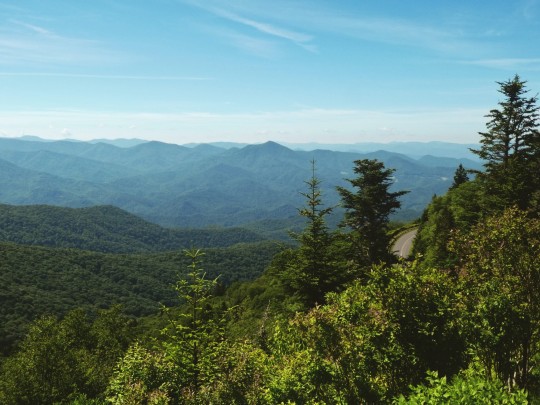
Current Situation of Deforestation in the US
Deforestation in the United States has been a cause for concern for decades. Despite vast forested areas in the country, there is constant pressure on these ecosystems. Below are some key aspects of the current situation of deforestation in the United States:
Loss of Natural Habitat: One of the most noticeable effects of deforestation in the United States is the loss of natural habitat for wildlife. As forests are cleared for urban expansion, agriculture, and industry, many animal and plant species are threatened or displaced.
Climate Change: Forests play a crucial role in carbon capture and climate regulation. Deforestation contributes to climate change by releasing large amounts of carbon stored in trees and forest soil.
Water Quality Effects: Forest clearing can affect the quality of water in nearby rivers and streams. Trees play an important role in filtering contaminants and stabilizing water flow.
Loss of Natural Resources: Deforestation also results in the loss of important natural resources, such as timber. Without sustainable management, forest exploitation can deplete these resources irreversibly.
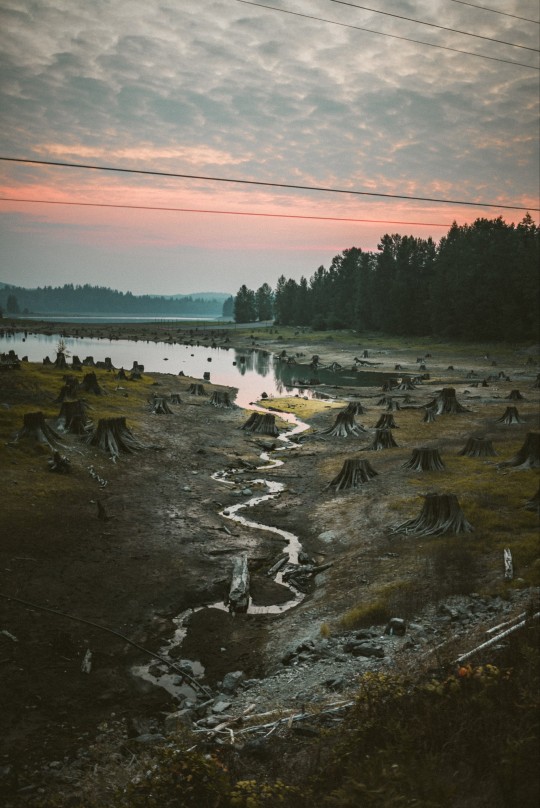
Proposals to Address Deforestation
Given the importance of forests in global health and people's quality of life, it is crucial to take action to address deforestation in the United States. Below are some proposals to tackle this problem:
Promote Sustainable Forestry: Promoting sustainable forest management is essential to ensure that U.S. forests are not overexploited. This involves implementing responsible logging practices that allow for forest regeneration and biodiversity conservation.
Ecosystem Restoration: Investing in the restoration of degraded ecosystems can help reclaim areas that have been deforested in the past. This includes planting native trees and restoring natural habitats.
Protection of Sensitive Areas: Identifying and protecting ecologically valuable areas is crucial. Creating natural reserves and national parks contributes to the conservation of intact ecosystems and biodiversity preservation.
Education and Awareness: Public education about the importance of forests and the impacts of deforestation can encourage informed decision-making and citizen involvement in forest conservation.
Effective Policies and Regulations: Strengthening and enforcing laws and regulations related to tree felling is essential. This includes implementing measures to prevent illegal logging and ensure the sustainability of forest exploitation.
Economic Incentives: Providing economic incentives to businesses and landowners who adopt sustainable forestry practices can be an effective strategy to reduce deforestation.

Conclusion
Deforestation in the United States is a problem that requires ongoing attention and decisive action. Forest loss not only has local impacts but also affects the globe by contributing to climate change and biodiversity loss. To protect our natural resources and ensure a sustainable future, it is essential to effectively address this challenge through sustainable forest management, ecosystem restoration, and public awareness. Only through a comprehensive and collaborative approach can we preserve the valuable forests of the United States for future generations.
Thanks for reading!
-WildTrail team
#deforestation#forest#climate change#pollution#awareness#conciousness#education#nature blog#nature lover#nature#new post#text post#text#reading#read#natural resources#follow#txt post#txt#share#article#social issues#social
42 notes
·
View notes
Text








Neolithic Tools and Materials Photoset 2, Recreated Neolithic Roundhouses, Stonehenge Visitor Centre, nr. Salisbury, Wiltshire
#ice age#stone age#bronze age#copper age#iron age#neolithic#mesolithic#calcholithic#paleolithic#prehistoric#prehistory#tools#natural resources#natural#axes#flintknapping#archaeology#stonework#textiles#Stonehenge
390 notes
·
View notes
Text

Cleveland Cliffs iron ore taconite mine
14 notes
·
View notes
Photo

Natural Gas and Oil fields in the Caspian Sea
66 notes
·
View notes
